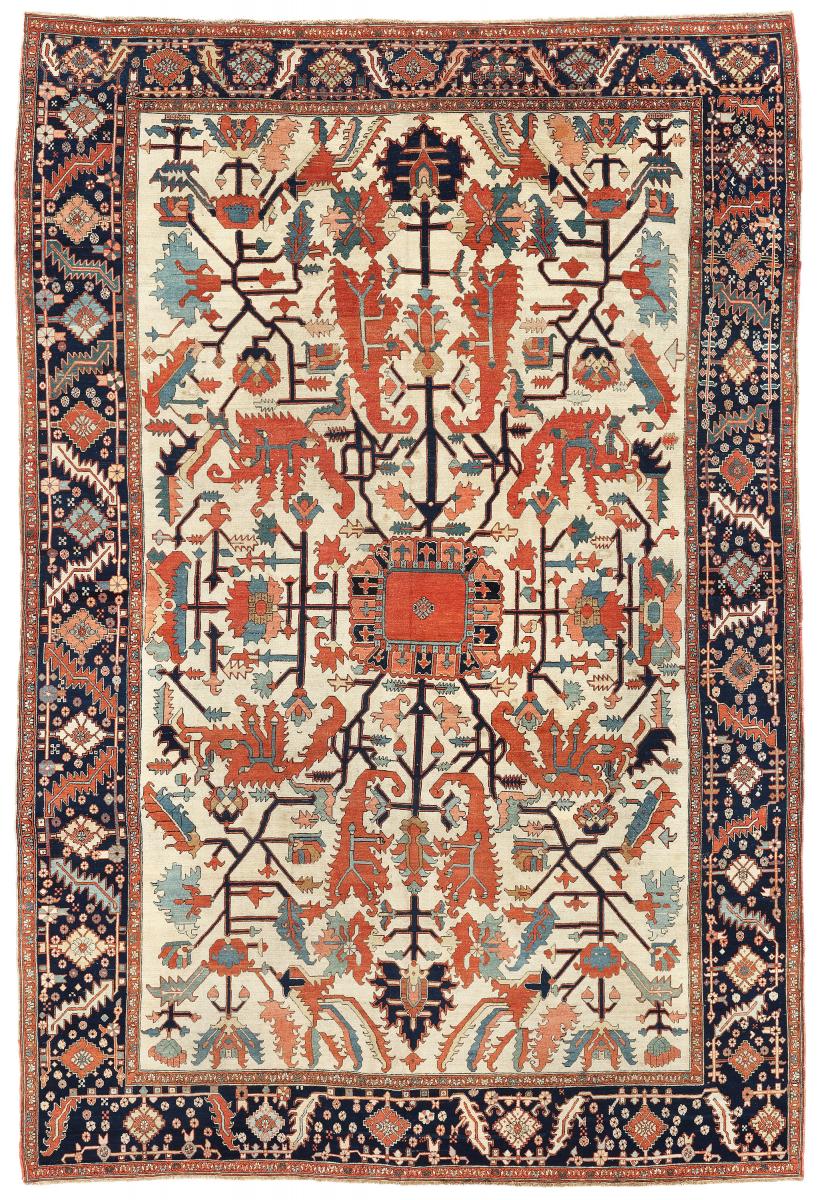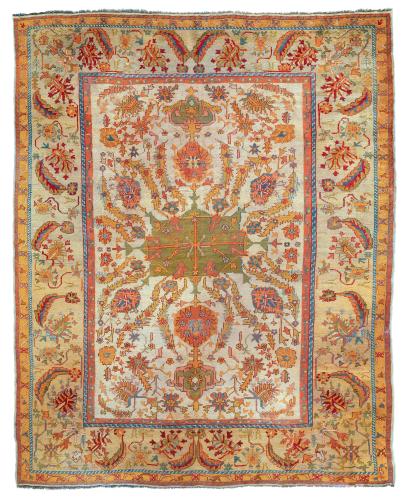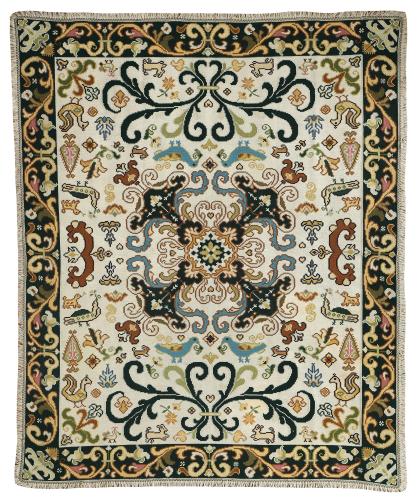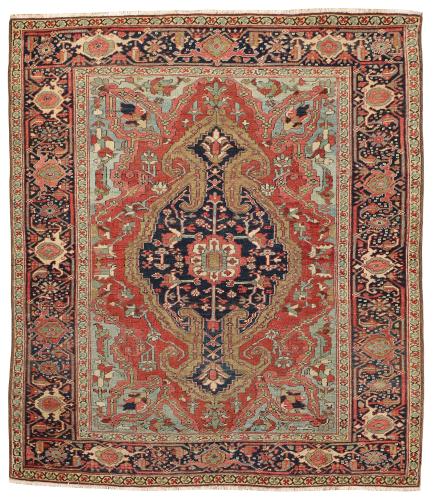

This object is eligible for a Certificate of BADA Provenance
The BADA Standard
- Since 1918, BADA has been the leading association for the antiques and fine art trade
- Members are elected for their knowledge, integrity and quality of stock
- Our clients are protected by BADA’s code of conduct
- Our dealers’ membership is reviewed and renewed annually
- Bada.org is a non-profit site: clients deal directly with members and they pay no hidden fees
Rare ivory ground Serapi carpet from 1870 or earlier in excellent original condition. Serapi carpet weavers frequently used large areas of un-dyed wool, these ivory off-white tones provide amazing contrast to the wider range of beautiful vegetable dyes. The large geometric leaves and subtle medallion motif are sublime with pale greens, rust brick tones and muted blues.
Antique Serapi carpets are more intricate finer tribal weavings of the Heriz region hand-woven by Azerbaijan Turkish inhabitants close to the city of Heriz in North-West Persia. They are famous among collectors because of their vivid vegetable dyes or soft earth tones that are woven on a geometric pattern. In terms of design, drawing, and coloration as well, Serapi carpets are clearly part of one and the same tradition as Heriz, despite being a distinct antique rug style, which originated as a Northwest Persian adaptation of early Sarouk Farahan medallion, but with a more geometric, abstract, village sensibility.
Like Heriz, Serapi carpets have a multiple concentric medallion format that emits jutting branches or vines ending in large stylized palmettes, leaves, or flowers, with framing cornerpieces at the periphery of the field. The main border is usually some variant of the ‘turtle’ vinescroll pattern. In terms of design, what distinguishes Serapis from Heriz carpets is once again their more refined approach. The articulation of the medallions is crisper, more finely linear, and open, the highest grade in terms of weave, and very probably the oldest type in terms of age. Heriz carpets are generally coarsely woven with as few as 30 knots per square inch.They also have a deeply depressed warp structure with a markedly ribbed back surface. Since the early twentieth century they have come to make use of light blue cotton wefting. Serapis, in contrast, have a higher knot count, sometimes attaining 80 knots per square inch.Their backs are relatively flat, and they have ivory cotton wefting. Generally they have a softer floppier handle than Herizes, and they are thinner. On the whole, it appears that what we call Serapi carpets are simply the oldest, most well-designed, and finely woven Heriz carpets.
We offer the service of viewing any of our carpets & rugs in-situ in London, Surrey, Hampshire the UK & Europe by appointment. Please contact us using the enquire form below.
Dimensions
435 x 295 cm / 14'3" x 9'8"Condition report
Exceptional original pile and condition.Stock number
2023The BADA Standard
- Since 1918, BADA has been the leading association for the antiques and fine art trade
- Members are elected for their knowledge, integrity and quality of stock
- Our clients are protected by BADA’s code of conduct
- Our dealers’ membership is reviewed and renewed annually
- Bada.org is a non-profit site: clients deal directly with members and they pay no hidden fees




